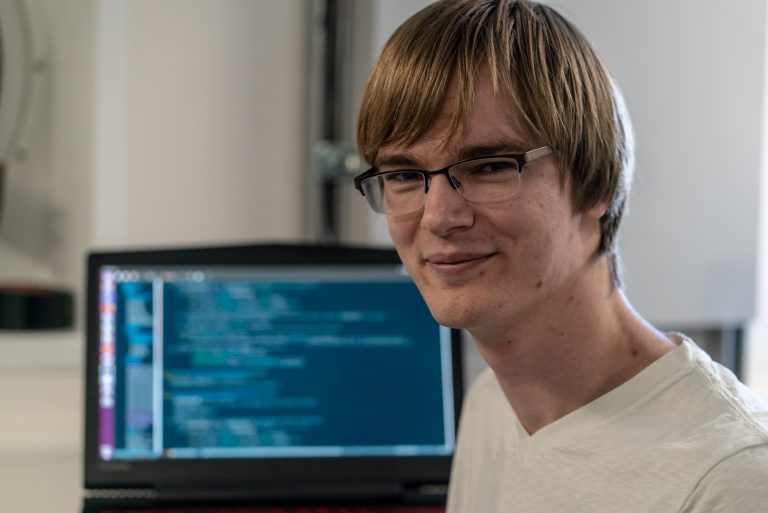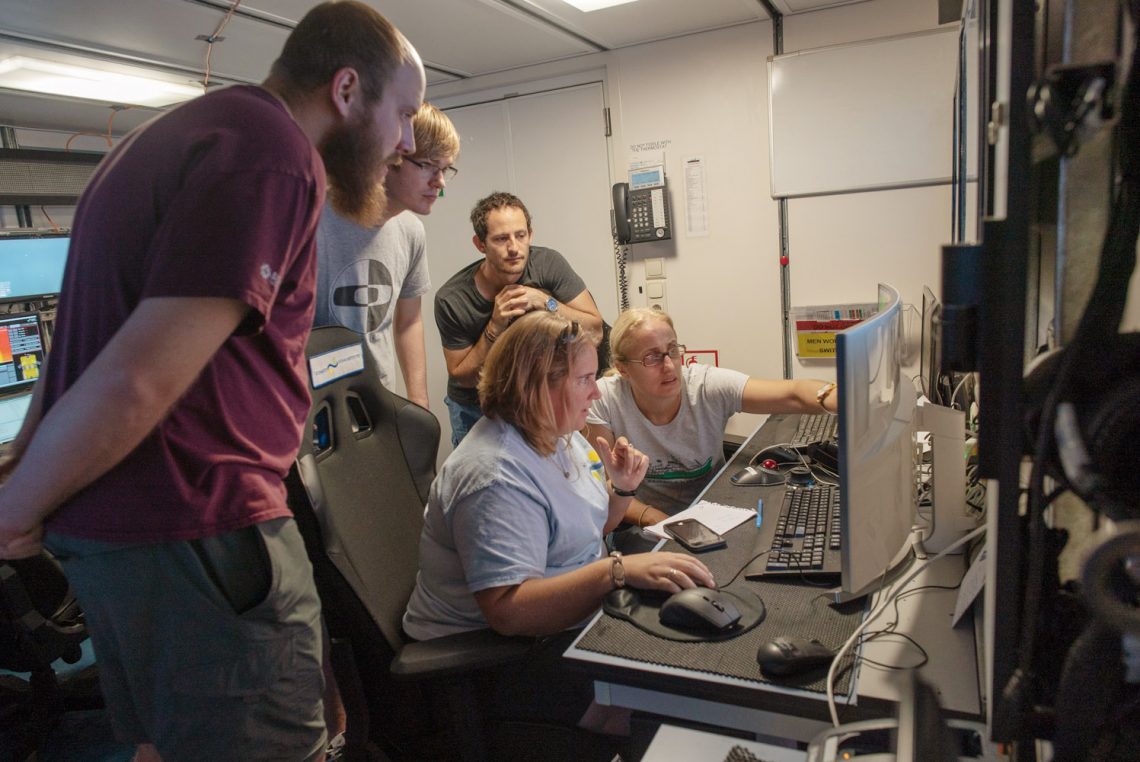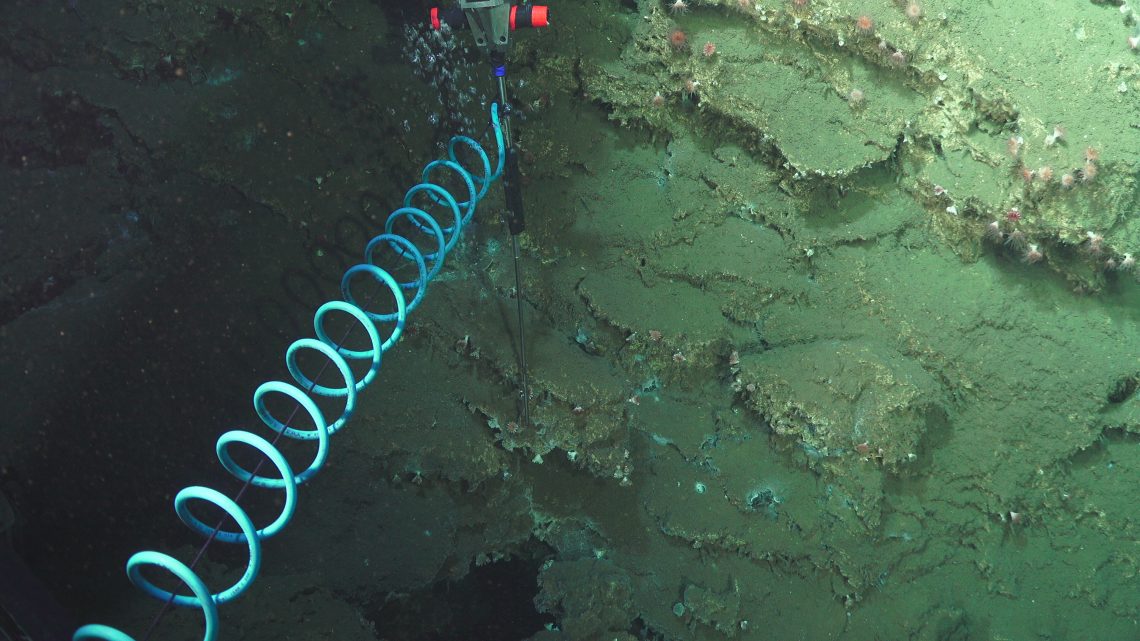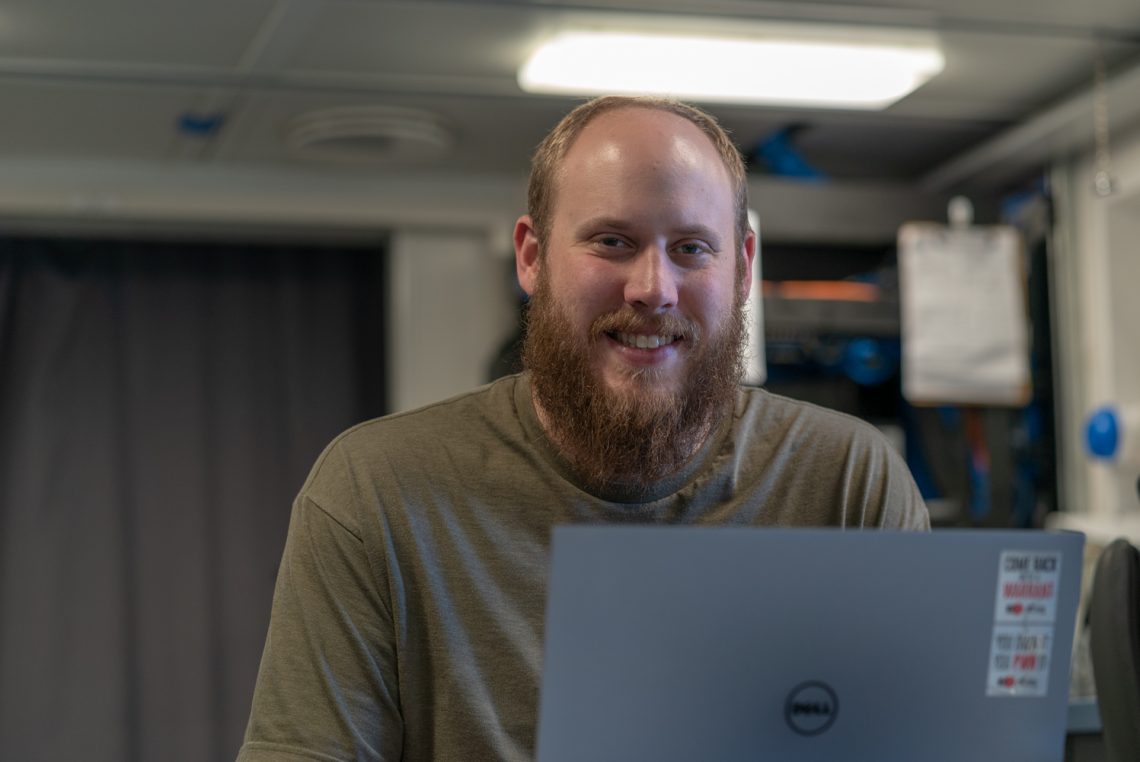The oceans are big. The universe is even bigger. A needle in a haystack does not begin to describe the difficulty of finding what you are looking for on the Earth’s seafloor, much less below the icy cover of a moon orbiting Jupiter 588 million kilometers away! Luckily, Ben Ayton and Eric Timmons are not men of problems, but of solutions, and they want to enable robots to find scientifically relevant places under the sea and around the sun.
By asking what geological features, temperature anomalies, chemical signatures, or any other clues could be associated with the aspects they are looking for, they can zero in specific locations, whether on Earth or somewhere else in outer space. “During this expedition, the geologists are interested in finding hydrocarbon seepage and hydrothermal fluids; in space contexts, the goal is finding life,” says Ben Ayton, a PhD student specializing in exploration of dangerous environments and in trajectory planning under complex constraints. Looking for cold seeps in Costa Rican waters is good practice for Ben and Eric, since life in places like Jupiter’s moon Europa would likely cluster around features at analogous to seeps on Earth.
Ben and Eric’s work attempts to direct the robots to locations of scientific relevance, or more exactly, to teach the robots to discern where to go to find what they are looking for. The algorithm they are designing benefits from two complementary components: exploitation of previous knowledge and exploration of unknown areas.

Combinations
The first angle of the algorithm is exploitation of knowledge. Information from different sources has been gathered and fed to a model which tells the team about places that are promising. Sonar data acquired with Falkor’s multibeam echosounder, hypotheses from the geologists onboard (who are able to recognize certain features like mounds or ridges that could correlate with seeps), and rich data sets from previous studies in the area that show seeps observed in the past: the algorithm uses all of these ingredients in order to yield the waypoints that SuBastian will follow on its dives. The innovation is that the model is able to find patterns in the data and use those to suggest new places where seeps could be found.
SuBastian’s 203rd dive was the first one in which the algorithms suggestions were tested. “We did not find any bubbles – we only had five waypoints and the probability of finding seepage in this large region is fairly low,” said Ben. “However, it is encouraging to see that the regions selected by the algorithm at least corresponded with the geologist’s understanding of reasonable locations to explore.” Not only that, but in one of the points chosen, evidence of prior seepage was indeed found.

For dive 205, more information was added to the model, including from SuBastian’s dives and sound anomalies found in the seawater with Falkor’s sonar. The model produced ten areas of interest. It is a numbers game, and the odds were against this optimistic team of engineers. However, their hard work paid off and researchers found the first site of active seepage of the expedition. SuBastian’s mass spectrometer was then used to identify the chemical signatures in the water, which can be indicators of fluids from the deep earth or biologically relevant gases that life forms use to survive (such as carbon dioxide, methane, hydrogen, or dissolved oxygen). Dive 206 did not disappoint either, as the algorithm continued pointing SuBastian in the direction of active hydrothermal seeps.

Explore
Seeps have been found, so the algorithm has proven its worth, and as Ben said, the body of information available to feed the model was robust. But what happens when the robots are sent to find life in places like Jupiter’s moon, Europa? “In terms of data sets, we don’t have any about Europa,” says Ben. “The algorithm works with exploitation of what we know, but it also works with exploration of what we don’t know, so it can learn.” In destinations such as Europa, Ben is certain that the exploration behavior will shine through: “The framework is robust enough that we can account for the fact that we have weak knowledge of the place.”
For the time being, Ben and Eric are happy to see their algorithm take steps forward, but there is no stopping to celebrate. The geologists onboard are creating a map that illustrates the types of rocks that can be found in each region of the seafloor. The algorithm designers are eager to learn how the geologists are incorporating this information and updating their models to simultaneously try to get the technology to do the same: “It’s exciting to get the technology to learn alongside these scientists.”
One thing is for sure: nature will not to make easy going for them. “One big thing we noticed is that we’ve been operating in a binary way, and the world is not so binary,” laughs Ben, while the team evaluates what can be learned from the past day’s experience. Nature is not black and white, and the algorithm will have to account for the nuances of the cosmos in this never-ending numbers game.


